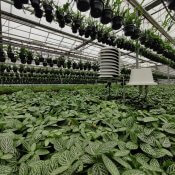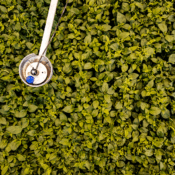Integrating the human element with manual input
Data is always most powerful when it’s combined from a variety of sources.
The more context you have available to you, the more informed your decision-making. Well documented, easy to explore information is always an asset, whether it’s validating tried and tested methods, providing extra support to a hunch, or creating the space for an experiment. Sometimes, we simply don’t know what we don’t know yet. Building technology for growers has made the 30MHz team appreciate just how many factors go into producing a healthy and economically sustainable crop. We know that a major role for a platform for digital agriculture is helping agribusinesses spot the relationships between these factors.
Augmenting knowledge
Sophisticated farming techniques and agricultural innovation have been around much longer than computers or the cloud. The most transformative among them have been tools that help human ingenuity and decision-making go further. We believe that to truly serve the needs of agribusinesses, a platform for digital agriculture has to help growers make the most of the insights available to them.
Two words: collaboration, and integration.
We’ve built a system that’s collaborative, and facilitates interaction around crop-level data, whether it’s expressed as a chart, heatmap, gauge or graph. With comments, tagging and groups we’ve made it easier for teams to exchange expertise, knowledge and observations on the crop conditions they’re monitoring. We’re bringing information together, and that includes the knowledge within teams that may not yet be recorded.
Integrating the human element
The agtech landscape is diversifying, and new digital tools are developing to help solve problems across the chain, and across niche sectors within agriculture. But while a great deal of relevant data comes from other systems (which we’re ready to integrate with), we know that there’s plenty of crucial information that doesn’t come from software or a sensor.
That’s where manual (input) meets digital.
Developing ZENSIE involves speaking to growers, and constantly learning about their challenges— and how they innovate to resolve them. Among the many things we’ve learned is that while agriculture is digitising, it still involves its fair share of hand-written notes. From pest observation during a crop round (or pest counting on sticky traps) to numbers on harvest or losses, key data is still recorded the old fashioned way. That doesn’t mean it should be siloed from other insights.
With the manual input feature, we make it easy to bring data collected the low-tech way straight into the ZENSIE platform, and interact with that data alongside crop-level data, or data from a climate control system. And, as with all other data in ZENSIE, users can share, compare and collaborate with colleagues. Growers in our community have gotten excited about manual input for scoring harvest, scoring pests and evaluating the effect of adjusted inputs on their crops. Consultants in our community have also pointed out the potential of manual input to digitise and standardise internal processes, through templates— one group in particular is excited about using standard forms for their advisory practice.
Have questions about manual input, or bringing agridata together? Get in touch below.


30MHz is typing… Our extended support team is ready to chat!
At 30MHz we think it’s important that our users can use our platform in an optimal way. At times you may have questions and you would like some help from our support team. Email and our support page filled with helpful articles were your go to’s. But we thought it was time for something extra… ...Read more
New 30MHz connect casing: How we protect your tech
To make sure your dataflow is fully protected, 30MHz introduces a new connect casing: waterproof, dust proof and even resistant to hits. This special shield will last longer and ensure a reliable dataflow from the connected sensor. What does that full protection mean? That’s what we will explain in this article. Watertight: resistant to wetness ...Read more
Most popular sensors for your greenhouse
As a grower, you know that optimal crop development starts with precise monitoring of your cultivation environment. But how do you transform raw data into actionable insights for your crops? This is where our wireless sensors and the 30MHz platform come together. Our sensors measure essential variables such as VPD, dew point, moisture deficit, EC, ...Read more


